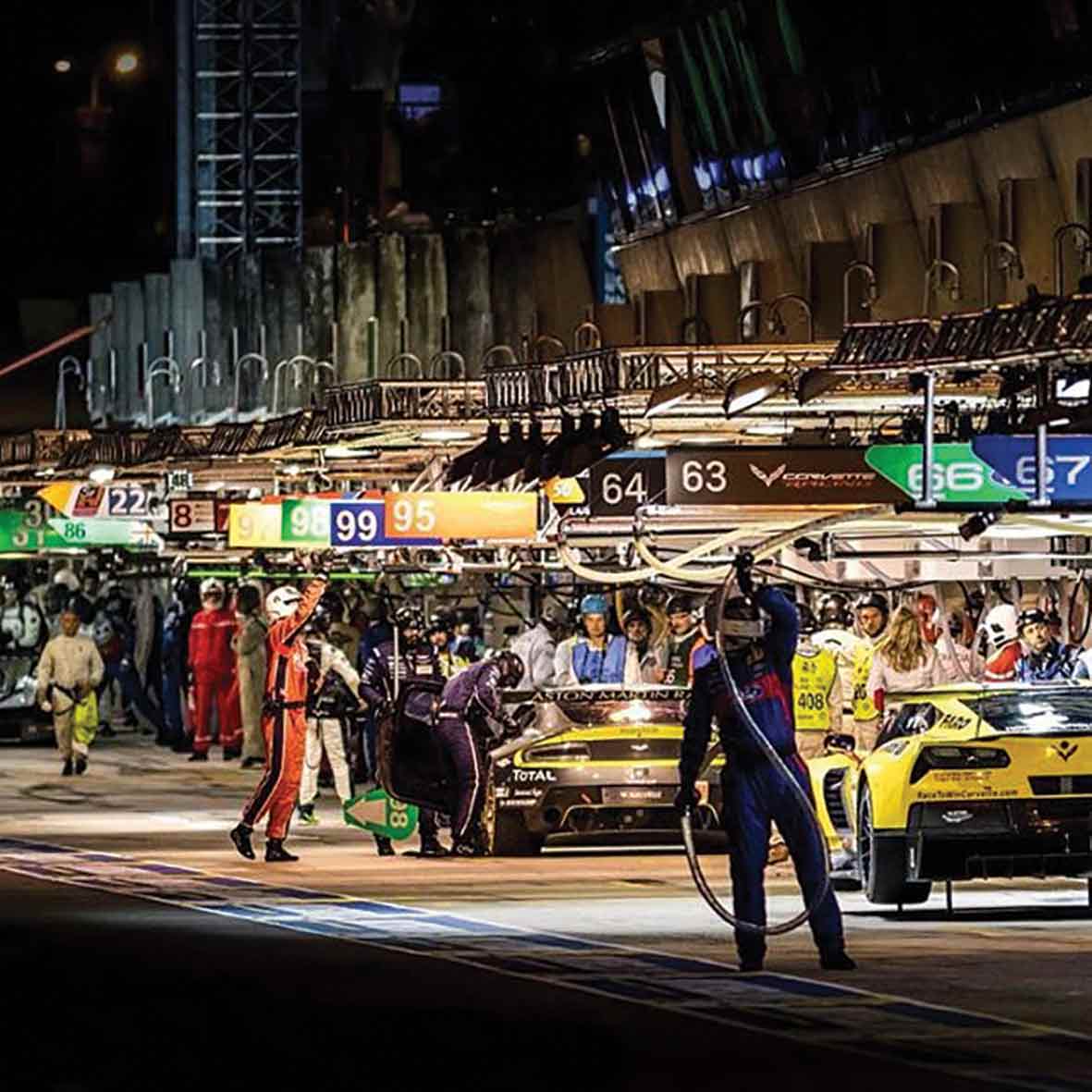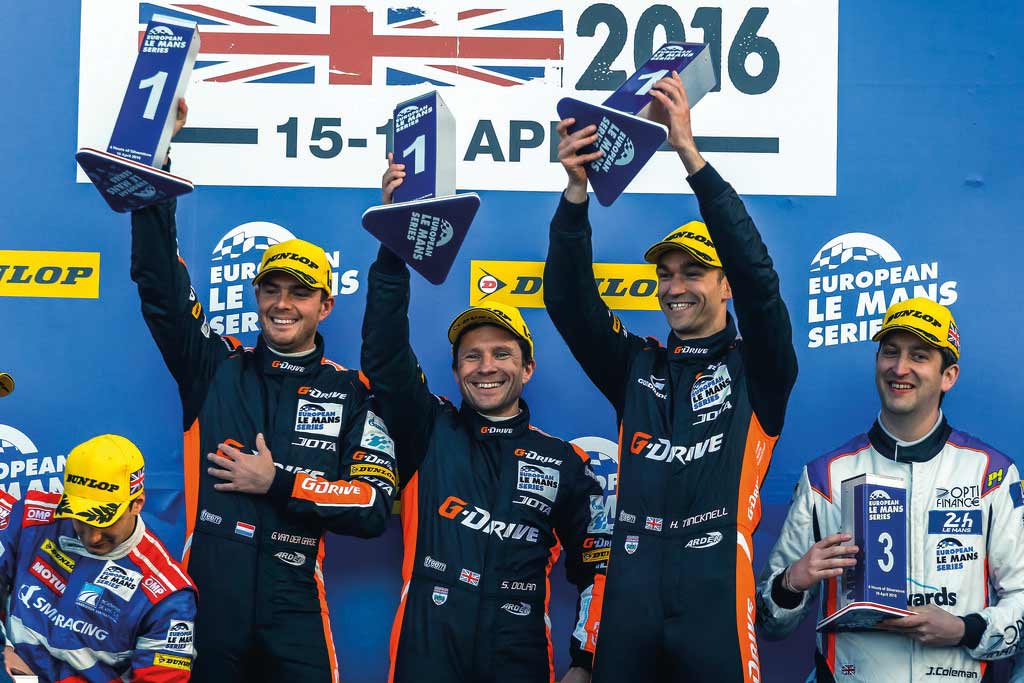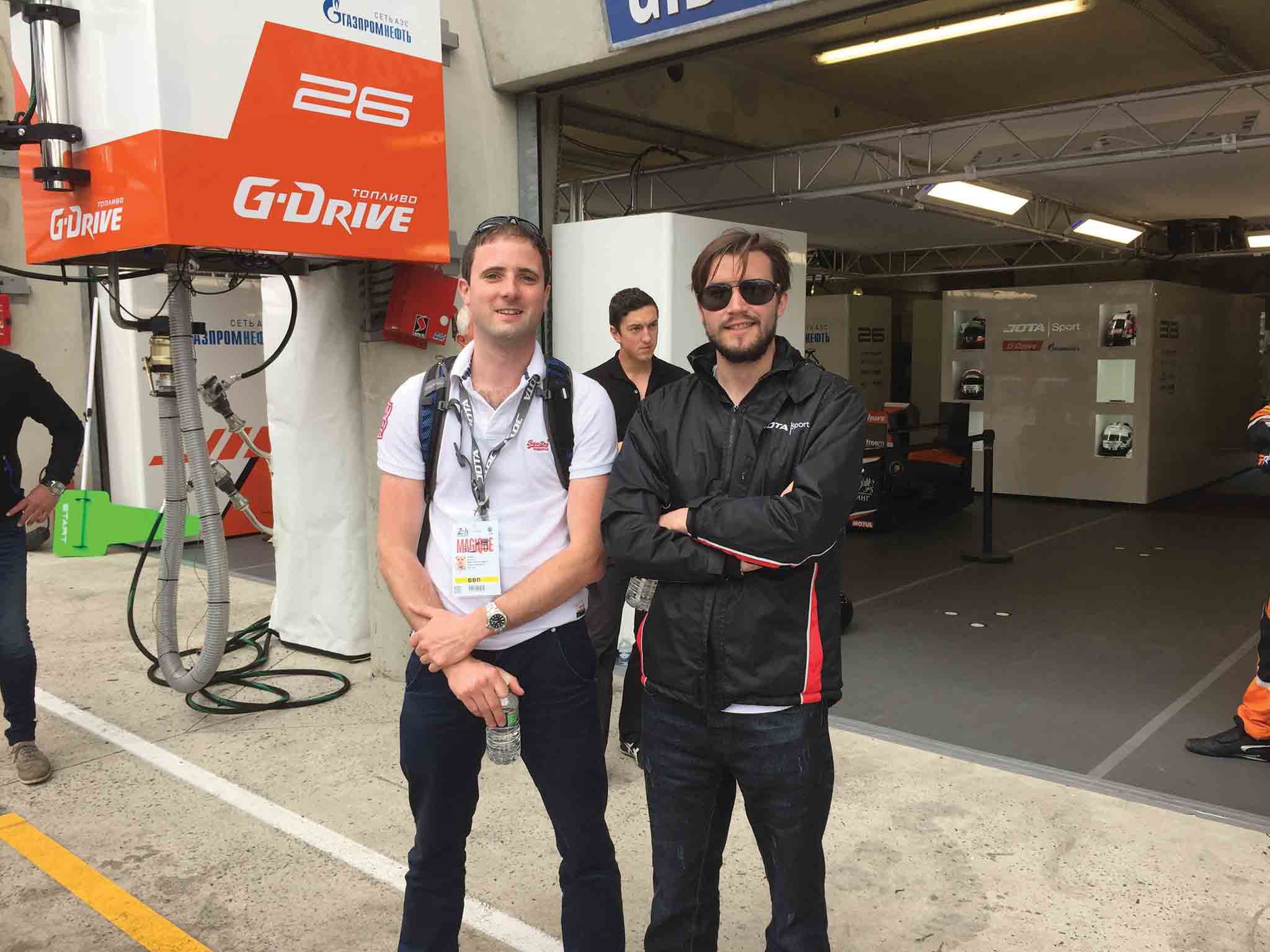The festival atmosphere began as soon as we drove into Folkestone.
It was the Thursday before the big race and the shuttle terminal was already overwhelmed by motor-sport enthusiasts ready to embark on the 280-mile journey to the biggest race of the year.
Hours of queuing at the crack of dawn did not seem so bad with such palpable excitement in the air, and my travelling companion Ben – a petrolhead to the core – educated me by listing off every exotic auto-mobile around.
From a personal point of view, I was more interested in the people who, judging by their accents and transport, came from all four corners of the UK and all walks of life.
British eccentricity was clearly on display in the car in front of us, a BMW convertible, which had ‘Nuns on the run to Le Mans… The devil made us do it’ written across the rear of the vehicle. The driver and his passenger were clearly not women of God, but instead a couple of men in the full religious garb one expects to see in a convent.
Once we got to Le Mans that afternoon our car was ensnared in the gridlock which surrounds the circuit and engulfs the town. We passed the sprawling shanty towns which had sprung up around the eight-and-a-half-mile circuit at a snail’s pace, to reach our waterlogged camping pitch at around 10pm.
Undeterred, but far too much in need of beer to bother pitching the tent, we headed into the cir-cuit to visit the team we had travelled so far to see – Jota Sport.
Surprisingly, with just under 40 hours before the big race, the Jota pit was calm, with only a few of the 30-strong team of engineers finishing off their tasks.
By now the urge for an alcoholic beverage was worryingly overwhelming, so we quickly made tracks to one of
the hospitality tents we were lucky enough to have access to.

A decent meal, a few drinks and one major faux-pas later – when my ignorance led me to ask a table of three Jota drivers what they did for the team – and it was time to pitch the tent and get some sleep.
In the light of morning we surveyed the vastness of the campsites which for the next few days more than 250,000 fans would make their home.
The fraternity of motorsport was on display, with rare collectables and sports cars parked side by side with old bangers next to their pitches and flags from every conceivable nation flying proudly above the sea of tents.
It was soon time for the Drivers’ Parade – a tradition which sees the 180 competitors snake through the town as thousands line the streets to wave them on and led, bizarrely, by Jackie Chan.
Huge cheers rose up for each team, with drivers from both Jota G-Drive cars – the number 28 Oreca and the ‘Mighty 28’ Gibson – receiving rapturous applause.
But I was not entirely there to see cars and soon I found myself in the throng of a bunch of Le Mans fans kitted out as Star Wars Stormtroopers, headed by Darth Vader, Obi-Wan Kenobi and, of course, a male Princess Leia.
Partying late into the night, we were forced to take a tram back to the circuit.
In a spectacle which puts rioting football fans to shame, our carriage of perhaps 60 people from across Europe broke out in spontaneous song for the duration of the 20-minute journey.
With vocals led by a bunch of young Englishmen in tweed and flat caps, nearly everyone on board belted out the words to La Marseillaise, God Save The Queen, Oasis, Robbie Williams and, embarrassingly, Frozen.
The next day was more akin to Glastonbury or a carnival than a run-of-the-mill motor race. The smell of petrol hung in the air, and in the pits the atmosphere had gone from relaxed to noticeable anticipation.
As the time drew towards the 3pm start, the crowds staked out their positions in the stands and on the banks to catch glimpses of the cars.
Ben and I listened enthralled to the portable radios we had bought and tuned into Radio Le Mans as the commentators ratcheted up the hype.
Glamour was added when people learned that Hollywood star Brad Pitt would be officially starting the race, with actors Keanu Reeves and Jason Statham in tow.
Grey’s Anatomy star Patrick Dempsey had his own team taking part, Dempsey-Proton Racing, while British cyclist and Olympic hero Sir Chris Hoy raced in Jota’s LMP2 category for Algarve Pro Racing.
In the last hour before the start, the heavens opened yet again, but nature was not going to stand in the way of one of man’s biggest sporting spectacles and the fans stuck it out.
After Brad Pitt had weaved between the 60 cars which were on the starting grid, the engines roared to life. The wet conditions led to the first hour being behind the safety car, however, once it was removed it was game on – at over 200mph.
The pits were a hive of activity, with teams executing strategies formulated months in advance as well as reacting to unforeseen events.
Mechanics rushed this way and that in perfectly synchronised chaos, shaving off as many seconds as they could with each stop knowing that – despite being 24 hours long – the race could be won or lost in the pit.
Wary of getting in the way, Ben and I departed from the Jota pit to watch from the big wheel and take further advantage of the hospitality suite we had become so dependent upon for sustenance. At dusk we made our way to the ‘Village’ – the part of the circuit which felt more like a Spanish beach resort with its bustling bars and shops.
The sense that it was more about being at a festival than a race was further reinforced when we came across a large stage hosting a rock band in front of several hundred people.
All the time, though, we were listening to the radio in one ear to make sure we missed nothing that involved the team we had come to support.
Following a late night tour of the best viewing spots around the circuit, we staggered back to our tent at 3am.
During the five hours in which we slept there was heartbreak for Jota when the ‘Mighty 38’, in its last year before being retired, was shunted out by an Aston Martin.
It was not the first, and by no means the last car to meet its end either on the track or in the pit because of mechanical failure. In total, 14 of the 60 never saw the finish line.
All was not lost for Jota, however, as the 26 car had climbed to second place in its class and was making good time against the number 36 Signatech Alpine race leader.
We re-entered the Jota pit an hour before the end of the race and it was clear that despite the adrenaline each time the car pulled in, the team were exhausted. Most were sitting half-asleep in deck chairs, counting down the minutes and keeping their eyes on a screen displaying the times.
Friends and family of the team started to crowd into the pit for the finale, but faultless driving by the Alpine meant they held off Jota’s advances, winning by two minutes and 40 seconds.
As the chequered flag went down, the team celebrated their second place – it was their third time on the podium in the last three years, having won in 2014 and clinched silver last year.
The biggest shock of the race came one lap from the end when the overall leader, the LMP1 Toyota, broke down on the home stretch, one lap before the end, handing victory to Porsche.
When it was all over we ran towards the podium to watch the champions receive their trophies in front of the roaring spectators.
Soon after Jota G-Drive had been given their trophies and the spraying of champagne ceased, Ben and I were forced to bid a swift farewell to the team and start our journey back to the UK, leaving many fans to celebrate late into the night.
On our journey home French locals stood on bridges above the motorway waving at the fans heading to the coast and hoping to catch a glimpse of the most exotic cars. And while driving back, we were already planning what we will do next year, when we go to our second 24 Hours of Le Mans – because it really is a way of life.

WHAT IS THE 24 HOURS OF LE MANS?
Le Mans is the world’s oldest active sports car endurance race and has been running since 1923.
It is hosted on the Circuit de la Sarthe, which is owned by the Automobile Club de l’Ouest – founded in 1906.
Situated near the French city of Le Mans, the race was designed to test the ability of manufacturers to build sporty yet reliable cars.
The race is held in June each year and begins in the mid-afternoon, finishing the following day at the same hour the race started the previous day.
Over the 24 hours modern competitors often cover distances of well over 3,100 miles – approximately 18 times longer than a Formula One Grand Prix race. Current regulations mandate that three drivers share each competing vehicle.
There are two categories of vehicle racing during the 24 Hours of Le Mans – prototypes (LMPs) and Grand Touring cars (GTEs), both of which themselves are split into further categories -LMP1/2 and GTE-PRO and GTE-AM.
LMP1 is the fastest, with speeds over 200mph, and is predominantly, but not always, the preserve of factory-backed teams with big budgets such as Audi, Porsche and Toyota.
LMP2 is the second fastest with cars very similar to the class above, but with some cost limitations because they are only allowed to be operated by private race teams.
GTE cars must be in production for sales and have an aptitude for sport which can be used legally on the open road, with pro drivers racing in the GTE-PRO class and amateurs in GTE-AM.








